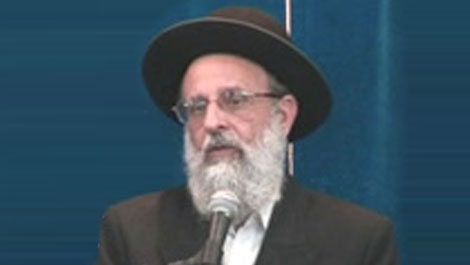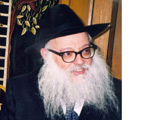Beit Midrash
- Sections
- Chemdat Yamim
- P'ninat Mishpat
- Family and Society
- Financial Laws and Tzedaka
- Basics of Financial Laws
A was driving on a straight road and came to a sign that said to slow down because of cars pulling out of a parking area, which he failed to do. B pulled out of the parking area without looking properly and was hit immediately by A’s car, damaging both. Which of the two, both, or neither to pay for damages?
Ruling: The gemara (Bava Kama 48b) arrives at the following rules regarding a collision between two passersby that damages both. "If both of them had permission or both of them did not have permission - if they both damaged each other, they are obligated. If they were both damaged by each other, they are exempt... if one had permission and the other one did not, the one with permission is exempt and the one without permission is obligated." One of the examples that Rashi gives for with permission is that they were in the public domain, and one of the examples he gives for without permission is that they are running. The Nimukei Yosef (ad loc.) says that if the two collide, it is considered a case of damaged by each other. Similarly if two cars collide in a manner that they had been moving in different directions toward each other, if they both were of the same level in regard to culpability they are both exempt.
Beit din arrived at the conclusion that A certainly drove "without permission" when he did not obey the traffic sign. Regarding B, at first glance he did not violate any traffic laws and, therefore, he should be considered "with permission." On the other hand, the fact that he did not look around him when he pulled out of the parking area is considered negligence. Although the gemara (ibid. 27b) does mention the rule that "people are not in the practice of looking well as they go," beit din determined that this is not the case regarding driving in public areas. Therefore, B who pulled out without looking was also negligent.
One can prove that negligence of this type is also considered "without permission." The gemara (48a) discusses a case where Reuven entered Shimon’s domain and damages were caused. The gemara says that if Shimon knew that Reuven entered his area and did not take steps to avoid damaging Reuven, then Shimon is obligated to pay. The gemara compares this to the case of one with permission (Reuven, of whom Shimon is aware) and one without permission (Shimon, who was not careful). So too, B’s negligence makes him considered without permission.
It is clear that A’s negligence was more profound than B’s. Would we say that relative to B, it is considered that A alone is considered to be the one without permission? The answer is no, as the matter is like two people who are running, where we do not find a distinction between when they are running the same speed or one is running faster than the other. Therefore, neither has to pay damages to the other.

P'ninat Mishpat (801)
Rabbi Yosef Goldberg
22 - A Worker Who Completed a Job With Permission
23 - Damages from a Car Accident
24 - A Truck That Hit a Car That Did Not Leave Enough Room
Load More

P'ninat Mishpat: Amounts and Conditions of Payment to an Architect – part III
based on ruling 83061 of the Eretz Hemdah-Gazit Rabbinical Courts
Beit Din Eretz Hemda - Gazit | Sivan 5785

P'ninat Mishpat: Did Any Furniture Go to the Buyer? – part II
based on ruling 84093 of the Eretz Hemdah-Gazit Rabbinical Courts
Beit Din Eretz Hemda - Gazit | Kislev 5786

P'ninat Mishpat: Amounts and Conditions of Payment to an Architect – part II
based on ruling 83061 of the Eretz Hemdah-Gazit Rabbinical Courts
Beit Din Eretz Hemda - Gazit | Sivan 5785

P'ninat Mishpat: Did the Real Estate Agent Remain Relevant?
based on ruling 84031 of the Eretz Hemdah-Gazit Rabbinical Courts
Beit Din Eretz Hemda - Gazit | Adar 5784

Rabbi Yossef Carmel
Head of "Eretz Hemda" Dayanut Kollel

The Nazir’s Sacrifice
Parashat Naso
Sivan 5763

Presents, Prayer, and Battle – Always?
5773

Parashat Hashavua: A Torah of Life – part V – More on Yehoshua
Tammuz 5785























